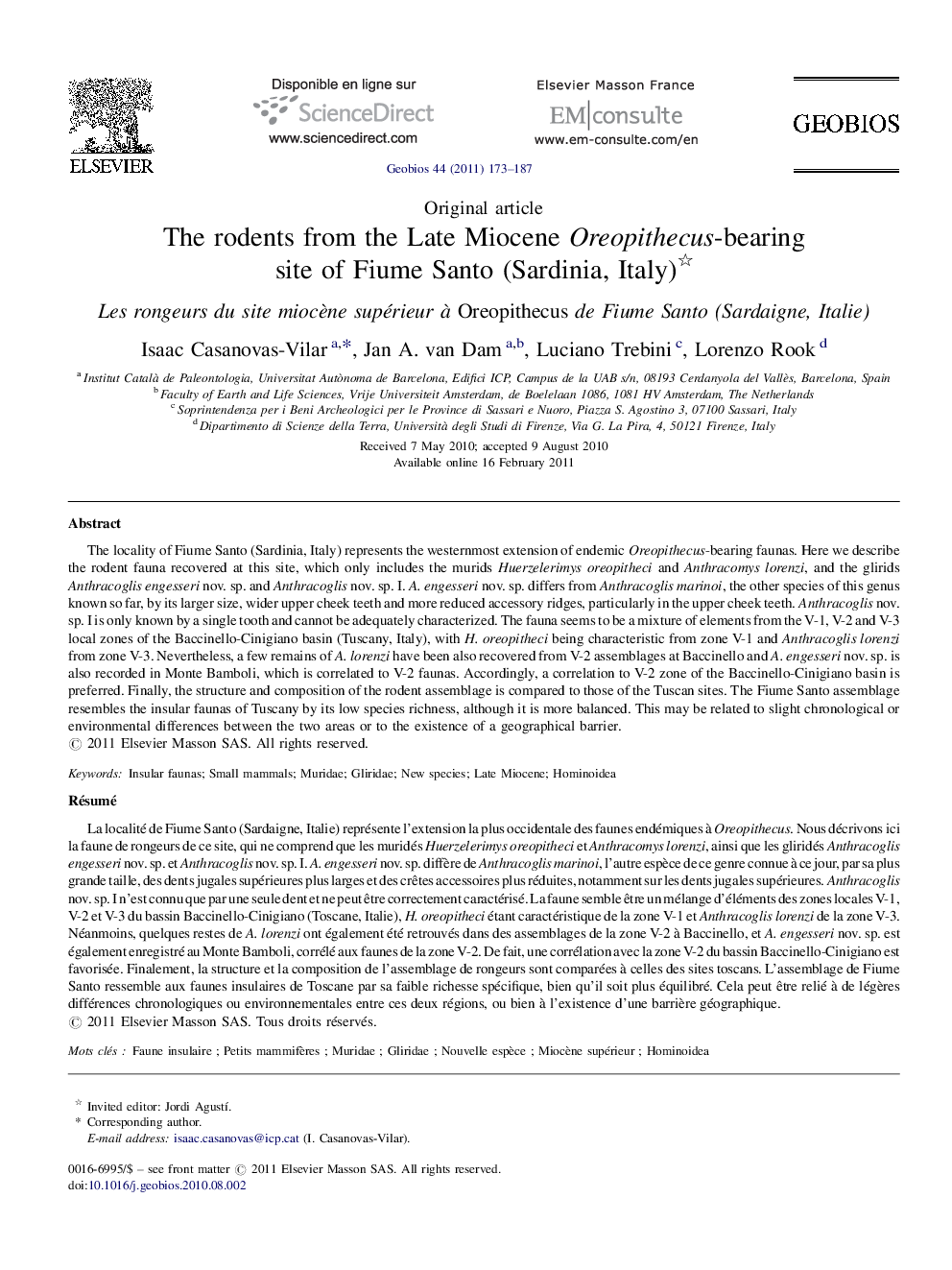| Article ID | Journal | Published Year | Pages | File Type |
|---|---|---|---|---|
| 4748166 | Geobios | 2011 | 15 Pages |
The locality of Fiume Santo (Sardinia, Italy) represents the westernmost extension of endemic Oreopithecus-bearing faunas. Here we describe the rodent fauna recovered at this site, which only includes the murids Huerzelerimys oreopitheci and Anthracomys lorenzi, and the glirids Anthracoglis engesseri nov. sp. and Anthracoglis nov. sp. I. A. engesseri nov. sp. differs from Anthracoglis marinoi, the other species of this genus known so far, by its larger size, wider upper cheek teeth and more reduced accessory ridges, particularly in the upper cheek teeth. Anthracoglis nov. sp. I is only known by a single tooth and cannot be adequately characterized. The fauna seems to be a mixture of elements from the V-1, V-2 and V-3 local zones of the Baccinello-Cinigiano basin (Tuscany, Italy), with H. oreopitheci being characteristic from zone V-1 and Anthracoglis lorenzi from zone V-3. Nevertheless, a few remains of A. lorenzi have been also recovered from V-2 assemblages at Baccinello and A. engesseri nov. sp. is also recorded in Monte Bamboli, which is correlated to V-2 faunas. Accordingly, a correlation to V-2 zone of the Baccinello-Cinigiano basin is preferred. Finally, the structure and composition of the rodent assemblage is compared to those of the Tuscan sites. The Fiume Santo assemblage resembles the insular faunas of Tuscany by its low species richness, although it is more balanced. This may be related to slight chronological or environmental differences between the two areas or to the existence of a geographical barrier.
RésuméLa localité de Fiume Santo (Sardaigne, Italie) représente l’extension la plus occidentale des faunes endémiques à Oreopithecus. Nous décrivons ici la faune de rongeurs de ce site, qui ne comprend que les muridés Huerzelerimys oreopitheci et Anthracomys lorenzi, ainsi que les gliridés Anthracoglis engesseri nov. sp. et Anthracoglis nov. sp. I. A. engesseri nov. sp. diffère de Anthracoglis marinoi, l’autre espèce de ce genre connue à ce jour, par sa plus grande taille, des dents jugales supérieures plus larges et des crêtes accessoires plus réduites, notamment sur les dents jugales supérieures. Anthracoglis nov. sp. I n’est connu que par une seule dent et ne peut être correctement caractérisé. La faune semble être un mélange d’éléments des zones locales V-1, V-2 et V-3 du bassin Baccinello-Cinigiano (Toscane, Italie), H. oreopitheci étant caractéristique de la zone V-1 et Anthracoglis lorenzi de la zone V-3. Néanmoins, quelques restes de A. lorenzi ont également été retrouvés dans des assemblages de la zone V-2 à Baccinello, et A. engesseri nov. sp. est également enregistré au Monte Bamboli, corrélé aux faunes de la zone V-2. De fait, une corrélation avec la zone V-2 du bassin Baccinello-Cinigiano est favorisée. Finalement, la structure et la composition de l’assemblage de rongeurs sont comparées à celles des sites toscans. L’assemblage de Fiume Santo ressemble aux faunes insulaires de Toscane par sa faible richesse spécifique, bien qu’il soit plus équilibré. Cela peut être relié à de légères différences chronologiques ou environnementales entre ces deux régions, ou bien à l’existence d’une barrière géographique.
